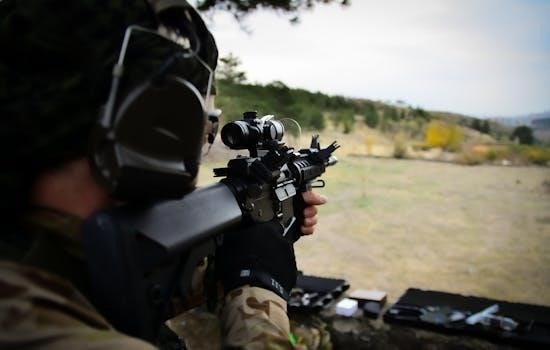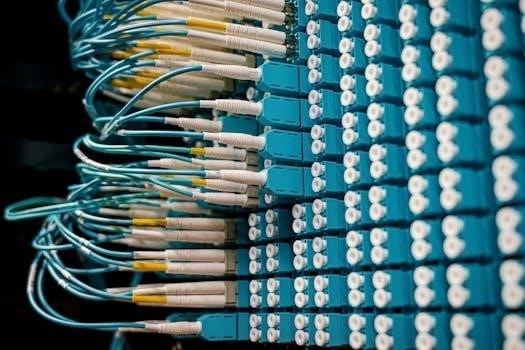Feasibility of Conversion
Before considering a manual to automatic transmission conversion, it’s crucial to assess your specific vehicle’s compatibility. Not all models are designed for this modification, requiring careful evaluation before commencing the process. Check with your kit provider to verify compatibility.
Assessing Vehicle Compatibility
Determining if your vehicle is suitable for a manual to automatic transmission conversion is the first, very important step. This involves a careful evaluation of your car’s make and model, as not all vehicles are designed to accommodate such a significant change. Some car models may have structural limitations that make this conversion difficult or even impossible, while others may lack the necessary mounting points or wiring harnesses for an automatic transmission. It’s essential to thoroughly research your vehicle’s specifications and any previous similar conversion projects. Consulting with a mechanic experienced in these types of modifications or checking with a kit provider is highly recommended. They can help assess if the chassis can handle the different dimensions and weight of an automatic transmission. Furthermore, they will help determine if the car’s electronics are compatible with a new automatic system and if a new ECU is needed. Ignoring these considerations can lead to a costly and potentially unsuccessful conversion process.

Cost Factors
The financial aspect of a manual to automatic conversion involves several elements. These include the initial cost of parts, labor fees, as well as any additional parts and modifications which might be needed to complete the change.
Initial Cost Estimates
The initial cost for converting a manual transmission to an automatic one can vary widely, depending primarily on the vehicle’s make and model. Generally, you can expect to spend anywhere from $1,500 to $3,000 for the conversion, but this is just a basic estimate. Some conversions may even range from $1,000 to $4,000 or even between $15,000 and $30,000 for a fully fitted conversion, especially for luxury or high-end vehicles, where the cost is significantly higher. The price of a new transmission itself can range from $300 to $3,400. Keep in mind that these are just rough estimates, and the final price will depend on the specific parts needed and the labor costs. Always consult with a professional mechanic for a precise quote before proceeding with the conversion. It’s important to factor in additional costs for fluids, filters and mounts.
Component Costs⁚ Transmission
The cost of the automatic transmission itself is a significant factor in the overall conversion expenses. A rebuilt transmission typically costs between $1,500 and $3,500, while a used transmission might be available for a lower price, ranging from $800 to $2,500. However, it’s important to note that a used transmission could come with some risks, and its condition needs to be carefully checked before purchase. The specific type of automatic transmission required for your car model will also influence the cost. Availability of parts can also impact the price. The automatic gearbox replacement can cost anywhere from $1,000 to upwards of $5,000. Furthermore, the transmission must be a match for the engine of your vehicle. It is important to get a compatible transmission.
Component Costs⁚ Additional Parts
Besides the automatic transmission itself, several other components are necessary for a successful manual to automatic conversion. These additional parts can contribute significantly to the overall cost. You will likely need to replace fluids, filters, and mounts, which will add to the total expenses. The gear shifter will need to be replaced, as well as the clutch pedal. The cost of these can vary widely, depending on the make and model of the car. Furthermore, the ECU (Engine Control Unit) of the car may need to be checked to see if it is compatible with the automatic transmission. If not, an ECU replacement will also be necessary. Moreover, the torque converter is one of the important components to consider, if it is not included with the purchased transmission. Be sure to check with your kit provider.
Labor Costs
The labor costs associated with a manual to automatic transmission conversion can be substantial, as this is not a simple task. The process involves removing the manual transmission, and installing the new automatic transmission. It requires specialized skills and tools. The engine may need to be removed to properly access the transmission. The complexity of the job means it is often best to be carried out by a professional mechanic who is experienced in this type of conversion. The time taken to complete the job will influence the final cost. A qualified professional will ensure the job is done correctly, minimizing potential issues. These costs can vary significantly based on the shop’s rates and the vehicle’s specifics, so it is always best to get a quote from a reputable mechanic before beginning any work.

Conversion Process
The conversion process is complex, involving removal of the manual transmission and shifter. The automatic transmission must be a match. Installation requires specialized skills and tools, and a substantial overhaul of the drivetrain.
Removal of Manual Components
The initial stage of converting from a manual to an automatic transmission involves the meticulous removal of all manual-specific components. This includes, but is not limited to, the manual gearbox itself, which requires disconnecting it from the engine and driveshaft. The clutch assembly, encompassing the clutch disc, pressure plate, and release mechanism, must also be completely extracted. Furthermore, the gear shifter mechanism, along with its linkage and any related cables or rods, needs to be carefully detached from the vehicle’s chassis. The removal process demands a thorough understanding of the vehicle’s mechanical systems and often necessitates specialized tools and equipment. It’s crucial to document each step and label all removed parts to ensure proper reassembly or disposal. This initial phase is fundamental to the success of the overall conversion and sets the stage for the installation of the automatic components. Proper attention to detail here prevents potential issues later.
Installation of Automatic Components
Following the removal of manual components, the next crucial step is the installation of the automatic transmission system. This process involves mounting the new automatic transmission to the engine, ensuring it’s a compatible match. The torque converter, which replaces the manual clutch, is carefully installed and aligned. The automatic gear selector mechanism, along with its associated cables or electronic connections, must be securely fitted into the vehicle’s interior. This may involve modifications to the existing console or dashboard. Additionally, the transmission cooler lines need to be correctly connected, ensuring proper fluid circulation for optimal performance. Wiring harnesses for the transmission’s electronic controls are installed and connected to the vehicle’s electrical system. The process requires precise measurements and careful attention to detail, following manufacturer specifications and guidelines. Proper installation is vital for the smooth and reliable operation of the newly installed automatic transmission, minimizing the risk of future issues.

Alternative Options
Instead of a full conversion, consider purchasing a new automatic vehicle, which can be more cost-effective. Overdrive units present another option, potentially cheaper than a full transmission swap, offering enhanced fuel efficiency.
Considering a New Automatic Vehicle
When faced with the prospect of converting a manual transmission to an automatic, one must carefully weigh the costs against the alternative of purchasing a new vehicle already equipped with an automatic transmission. This decision often hinges on financial considerations and the overall condition of the existing manual car. The conversion process can be expensive, involving not only the cost of the automatic transmission itself but also labor, potential modifications and additional parts. In contrast, buying a new vehicle offers the benefit of a car designed from the factory with an automatic transmission, potentially coming with a warranty, and more modern features. However, the new vehicle will come at a price, likely higher than the cost of the conversion itself. It’s a balance between the financial outlay, the attachment to the existing vehicle and the desired outcome of an automatic transmission.
Overdrive Units as an Alternative
Instead of a full manual to automatic conversion, consider overdrive units as a viable option. These units, often installed as an add-on to your existing manual transmission, can provide some of the benefits of an automatic without the extensive work and cost. An overdrive unit allows for lower engine speeds at higher vehicle speeds, potentially improving fuel efficiency and reducing engine wear. This approach offers a less complex and less expensive path compared to a full transmission swap. While an overdrive unit doesn’t offer the full automatic experience, it can be a good compromise for those seeking improved highway driving and fuel economy without the heavy financial burden of a full conversion. It’s a method to achieve a certain degree of automatic functionality without replacing the entire transmission system.

Professional vs DIY
Converting a manual to an automatic transmission is complex, requiring expertise. Professional installation ensures proper fitting and function. DIY attempts can be risky without sufficient experience, potentially leading to serious issues.
Expertise Required for Conversion
Undertaking a manual to automatic transmission conversion demands a significant level of mechanical expertise. This intricate process involves more than just swapping parts; it requires a thorough understanding of automotive systems. The engine needs to be removed, followed by the manual transmission and related components. The replacement automatic transmission must be a precise match for the vehicle, requiring meticulous attention to compatibility. Furthermore, the conversion process often involves complex adjustments and modifications to the vehicle’s drivetrain. The entire process tests the expertise of even experienced mechanics, emphasizing the need for specialized knowledge. Without the necessary skills and experience, attempting this conversion can lead to costly mistakes and potentially unsafe vehicle operation. It’s a process best left to qualified professionals who are well-versed in the intricacies of transmission systems. Proper knowledge is paramount for a successful conversion.